
Dutch doors (also called stable, split or divided doors) originated in the Netherlands in the 17th century. Designed to keep animals out of farmhouses while allowing fresh air in, they were common in Dutch communities in New England before the Revolutionary War.
Today they’re still popular as interior and exterior doors — this one, for example, lets ocean breezes into a home in Manhattan Beach, California, but can also keep kids or pets safely inside.


This 1922 Colonial house in Minnesota, updated by designer Katie Wick of Jkath Design Build + Reinvent, still has a little nook in its entryway where a bulky telephone used to rest.
Now it’s a sweet spot for a vase full of flowers, but a niche in an entry could also be retrofitted or designed to hold a charging station and keys.
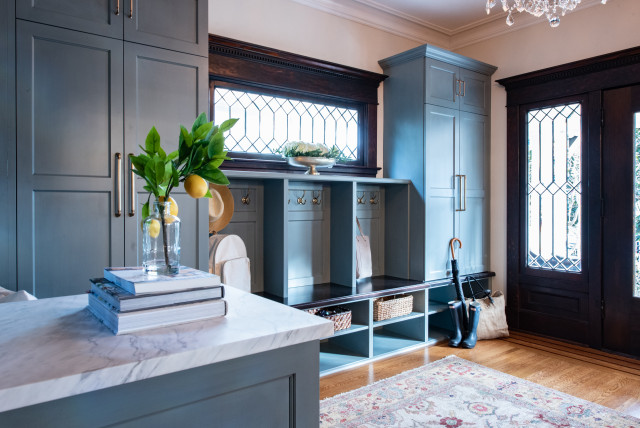
Also called leadlights or lead lights, leaded glass windows — such as these in a 1906 Craftsman in Seattle — have multiple panes of clear or frosted glass held together with soldered lead, copper or brass cames. Traditional stained-glass windows have a similar construction and purpose as leaded glass windows, but strictly speaking, stained glass has colored, painted or enameled glass, or glass tinted with glass stain, and is more likely to be pictorial.
The windows have been in America since Colonial days, but they were most popular in the late 1800s and early 1900s, when they were used to be both decorative and to provide privacy without blocking light — a timeless benefit.

Placed above the transom (the horizontal beam above a door) and operated with a long pole, transom windows similar to this one in a San Francisco Victorian have been around since 14th century Europe. They let light into adjacent rooms and, when open, allow for cross-ventilation — functions that make them useful today in houses of all architectural styles.

Milk delivery began in the late 18th century. By the late 19th century, residences like this 1880s home in Cincinnati often came equipped with little exterior doors leading to cubbies where the milkman could stash bottles. The homeowner could then grab the full bottles from a second door on the interior side and return the empties.
Now that Amazon and Uber Eats drivers have replaced the milkman, some builders are revisiting the concept for secure package and grocery delivery.

The farmhouse or apron-front sinks that are ubiquitous these days originated in 17th century Europe. Back then, running water was scarce, and an extra-deep bowl was necessary to hold a lot of water.
While we’re no longer fetching water from a well, the depth of these sinks makes washing big pots easy, and the finished front means there’s less countertop to reach over. They also add old-world charm to houses like this one in Tennessee.

In the late 19th century, a home library with floor-to-ceiling shelves of books was a status symbol, and the best way to reach those books was with a rolling ladder attached to a brass rail like those found in university libraries.
More than 100 years later, those ladders have rolled right into kitchens (like this one in an 1840 Massachusetts home) and closets, where they likewise help homeowners take advantage of vertical space.

Here’s another library ladder in action, in a Chicago butler’s pantry. A butler’s pantry — traditionally a small room off the main kitchen for the storage of dried goods, serveware and linens— was de rigueur in old English country houses and stately American homes.
As kitchens have become bigger and more open to the rest of the home, butler’s pantries have increased in popularity, often outfitted with coffee stations and acting as a secondary kitchen for messier food prep.
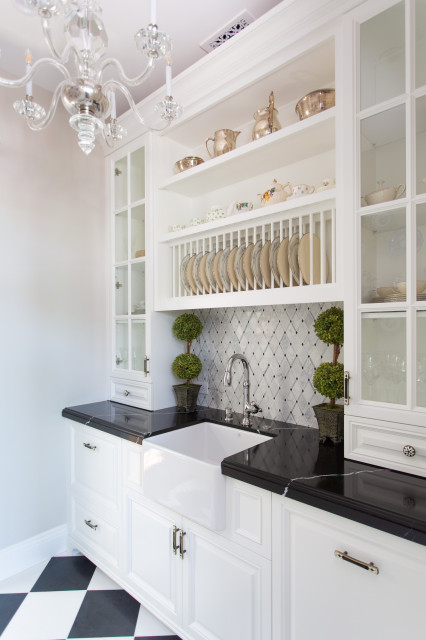
The origin of the plate rack isn’t easy to nail down, but there are examples of Delft racks, which held heavy pottery, that date to the 17th century. The American colonists had plate racks too. Not only do they make grabbing a plate easy (no more stacking and unstacking to get the dish you want), but they also let you display your prettiest pieces.
While they’re usually associated with informal country- and cottage-style kitchens, the rack in this Georgian Revival Los Angeles estate proves they can look quite elegant too.
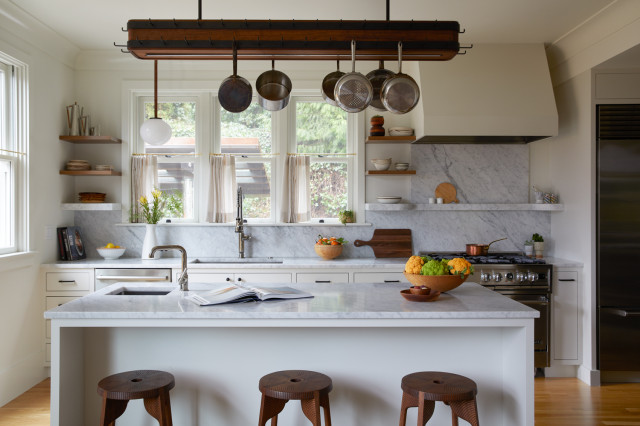
Busy kitchens in servant-staffed English estates usually had gleaming pots hanging at arm’s length for quick access. As this Portland, Oregon, kitchen shows, the design can work equally well for modern family cooks or those with limited cabinet space.

By the early 19th century, open-hearth cooking had given way to wood- and coal-fired stoves on both sides of the pond. Sometimes the stoves were built into the fireplace or a recessed stove alcove lined in brick or stone, which contained their heat for fire safety.
The fervor over traditional English kitchens has resulted in renewed popularity of the stove alcove. Advantages include an opportunity to make a statement with backsplash tile or stone, hidden venting and optional open storage.

Small holes in cabinet fronts (like those pictured in this Minneapolis Colonial) are another traditional detail that’s popular once again.
In addition to adding vintage charm, the little holes serve a practical purpose: They provide ventilation, which helps reduce mildew and mold. This can be practical not just for food storage in the kitchen, but also in laundry rooms, mudrooms and closets, to keep linens and clothes smelling fresh.

Before the Industrial Revolution and the widespread use of the sawmill, homes were usually built with hand-hewn logs, lumber, brick and stone, with the latter sometimes coated in lime plaster. As trends changed, many of those original finishes were covered with drywall, drop ceilings, wall-to-wall carpeting and the like.
A modern appreciation for “honest” materials has encouraged many homeowners to let those original features shine. More recently built homes can achieve the look by incorporating real brick and stone veneers, reclaimed-wood beams and floors, and plaster-like wall finishes.
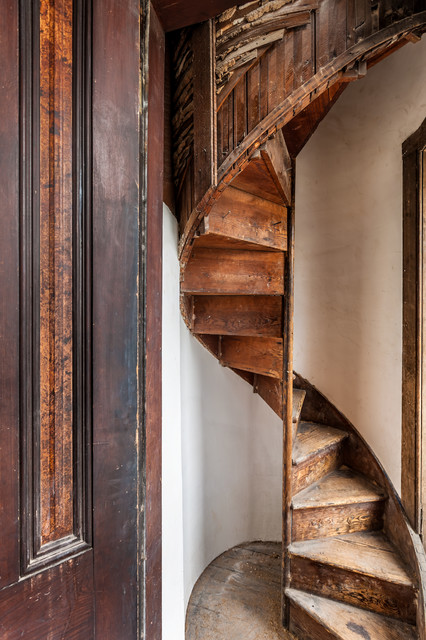
Renovators uncovered this tiny circular staircase leading to the attic in the historic 1898 Wilkins House in South Carolina. It was most likely used by servants — a common feature in fine Victorian homes — whereas the owners and their guests would have used the grander, more public staircase at the front of the house.
Even without servants, today’s owners of large homes may find themselves using a secondary staircase that leads from the kitchen to private rooms more often than their fancier front stairs.

Wainscoting, or wainscot, is paneling that covers the lower portion of a wall. For centuries it served the practical purpose of providing insulation and protection from the damp, cold lower portion of stone walls.
It’s used mostly as decoration now, but it still has practical applications. It prevents scuffs and is often topped by a chair rail, which, in a dining room, keeps chairs from dinging the wall. In this British Columbia bathroom, it’s topped with practical peg rail shelf. It also can hide wall imperfections and wires and can guard bathroom walls from splashes.

Originally marketed for use by animals as well as people, claw-foot tubs had their heyday during the Victorian period. They fell out of favor after World War I when apron-front tubs and showers became the norm, but in this era of palatial primary bathrooms and self-care rituals, they’ve become design darlings once again. The advantages? Being raised off the floor gives the illusion of lightness and lends a bathroom glamorous vintage style (as you can see in this new farmhouse in Milwaukee).
New acrylic models look almost identical to antiques and are much lighter and usually less expensive. If your home has an original enameled claw-foot tub, though, it can be refinished to look as good as new, and enthusiasts swear the cast iron holds heat much longer.

Skirted sinks have long been a DIY alternative to custom cabinetry and a staple of cottage style. But all of a sudden they’re popping up in newly remodeled homes of diverse budgets and styles.
One look at this Birmingham, Alabama, laundry room illustrates why. In addition to being a practical way to cover up pipes and create some easily accessible yet hidden storage, sink skirts are an opportunity to add softness, pattern and color to a room. If they get dirty, they can be popped in the wash, and, unlike cabinet doors, they can be swapped out easily and cheaply for a fresh look.
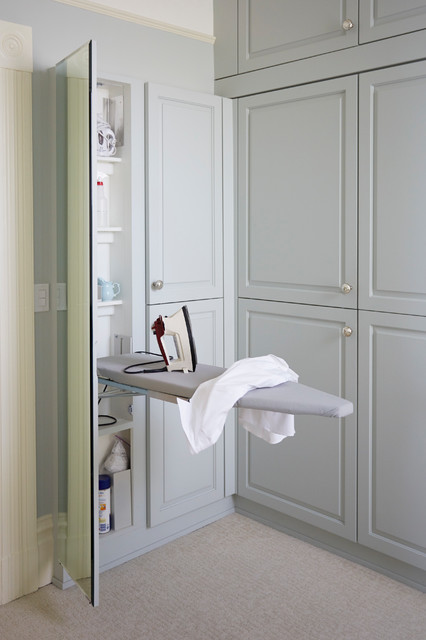
Many American kitchens dating to the early 20th century have skinny, shallow cabinets that once hid fold-out ironing boards and now hold spices.
Those who love a crisply ironed shirt can still benefit from the convenience of a built-in ironing board, though, which is why they’re a great addition to a laundry room or tricked-out closet, like this one in Alameda, California.

Chutes that carried soiled clothes and towels from bathrooms down to laundry rooms were easy to find a century ago. So convenient. So much nicer than dirty laundry piling up in a corner. So much easier than lugging a heavy basket down a flight of stairs. So why did they go away?
A little web searching suggests that modern home design often puts the washer and dryer on the same floor as the bedroom, eliminating the need. Some people worry about kids or pets getting stuck in them, and some fire codes prohibit them. But they’re still manufactured (Jennifer Gardner Design installed this one, in a historic Victorian in Seattle) and they’re still as practical as ever. When proper safety measures are taken, a chute can be a score.
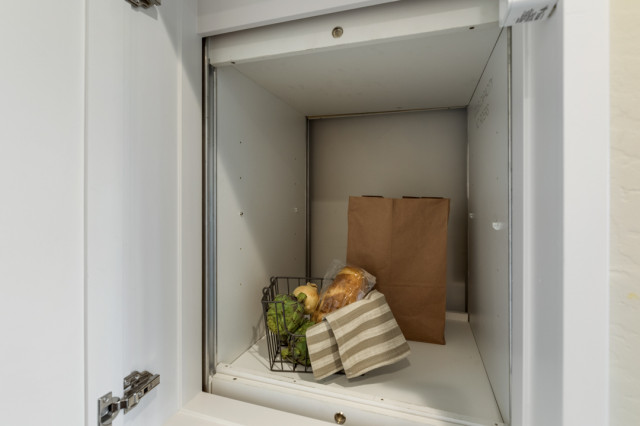
First popularized by Thomas Jefferson, dumbwaiters evolved from moveable serving stands used by waitstaff into small service elevators that could be raised or lowered via ropes on pulleys between floors. Electric motors became available in the 1920s, but much like laundry chutes, dumbwaiter use waned for various reasons, including fire safety concerns.
But also like laundry chutes, when made and installed with safety in mind (and following building code), they can take the hard work out of carrying food, laundry and other items between floors.
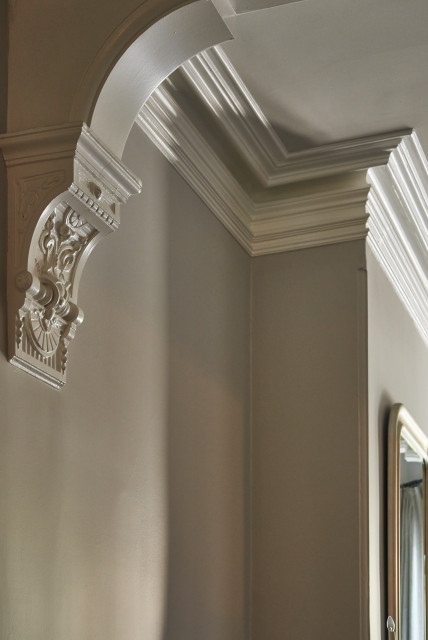
Traditionally made of plaster or wood but now also made out of vinyl and foam, crown molding was originally designed to cover up any cracks or irregularities at the intersection of a wall and the ceiling. It still serves that purpose, but its greatest advantage may be that it instantly adds elegance to a room, as you can see in this detail of a San Francisco Victorian’s plaster molding. Crown molding also draws the eye up, which can make a ceiling look higher.
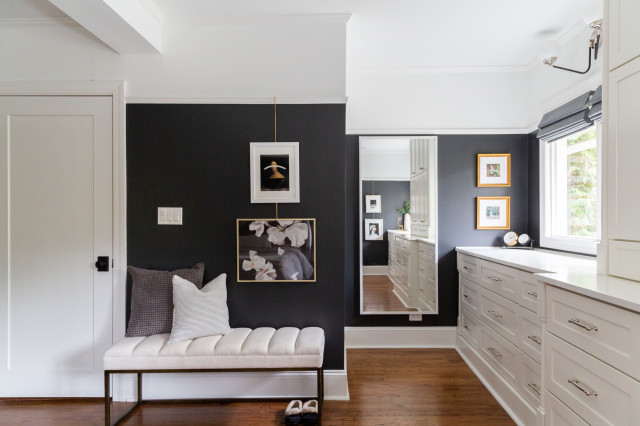
Picture rails are a thin piece of molding mounted just below the crown molding from which art can be suspended on wires or rods. They were popular in the U.S. from about 1840 to 1940, which makes them an appropriate detail in this 110-year-old Foursquare house in a Chicago suburb.
After around 1940, hanging art directly on the wall became the norm. But the advantages of a picture rail are manifold: Moveable hooks make switching up artwork without marring the wall a breeze, they simplify hanging art on plaster and brick walls, and they add a little visual interest on their own.
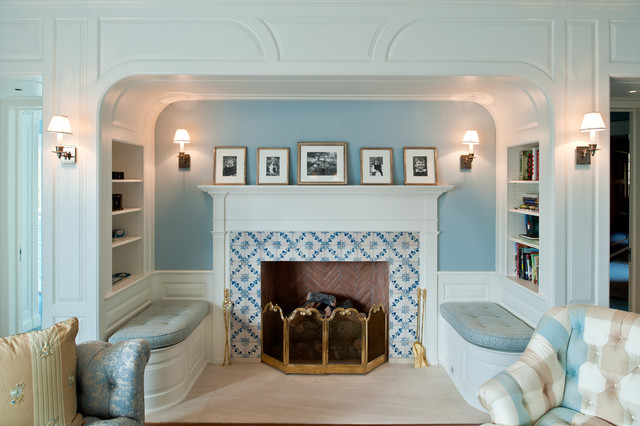
During the Arts and Crafts movement in the beginning of the 20th century, built-in or “permanent” furniture that fit the home’s architecture and created a unified look became all the rage. Prior to that, and after the 1920s, an eclectic assortment of moveable furniture pieces was more typical. An exception was the inglenook like the one seen here in a grand waterfront house in Darien, Connecticut. These built-in benches perpendicular to a fireplace were popular in the Victorian and Arts and Crafts eras.
Today, built-in shelving around a fireplace is fashionable and provides the same cohesive look that made it popular over a century ago. The inglenook is less common, but doesn’t this one look inviting?
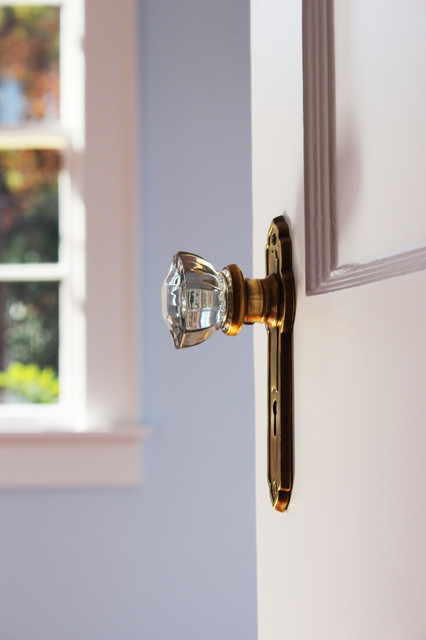
We don’t often give our interior doors a second look. But in many period homes, you might find Dutch doors, pocket doors, intricately carved wood doors and even secret doors. And more often than not, the door hardware is as beautifully crafted and considered as the door itself.
In this Tudor-style house in Atlanta, a refinished original glass doorknob sparkles like a diamond. It’s an easily replicable touch that, like many of these old-fashioned details, marries charm and function.


The Shakers arrived in America from England just before the Revolution and brought with them their belief in simplicity and order. To keep their spaces organized and flexible, they installed wooden peg rails around the circumference of each room, using them to hang everything from kitchen utensils to ladder-back chairs.
Peg rails remain particularly handy in kitchens and entryways, as seen in this Connecticut house designed by Hendricks Churchill.